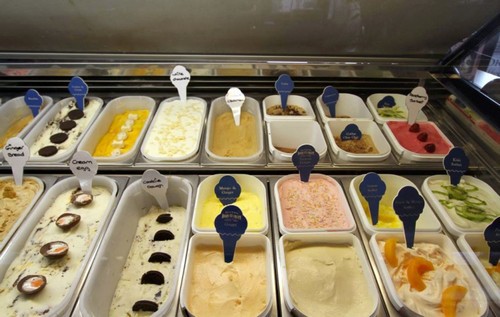Trade promotions include smart ways to push more of your product to your distribution channel. The more the motivation of distribution channel, the more the channel will push to the end customer. You can read about the many types of trade promotions being used in the market. The objectives of Trade promotions are manifold
Table of Contents
Objectives of Trade promotions
1) Achieve widespread distribution
One of the first objectives of trade promotions is to increase the distribution level of a company. If Kwality walls want to improve the distribution of its ice cream, it can give 1 ice cream free for every ice cream sold. This means higher margins to the retailer.
Looking at the margins, more and more retailers will tie up with the company. These new tie-ups mean more branding and sales opportunity for the company as well. Thus, by using various trade promotion strategies, a company can achieve widespread distribution.
This is especially important for start-ups which are not recognized but which want to establish themselves in the market. Hence, you will see start-ups using more trade promotions then mature companies.
2) Move excess stock forward
Many products are known to be seasonal in nature. However, because it is not the season of the product, there will still be sales pressure on salesmen to move the product in the market. This can be done via Trade promotions. In non-season, most companies offer incentives to their channel dealers or to their sales executive to achieve better sales figures.
The advantage of offering these incentives is that the channel dealer will push the product in the market. If you notice, most air conditioner retailers and dealers give huge discounts during the offseason (rainy season or winter season). This is because the discount is given from the company to the dealers, which is in turn passed on to the customers. Thus, the company achieves more sales by pushing more stock in the market.
It is one of the objectives of trade promotions that the excess inventory lying with the company should be liquidated. Not only seasonal product, any consumer or industrial level product can be pushed in the market when the company has excess inventory. Management of this excess inventory is a cost to the company in terms of warehousing and capital invested. So it is better than the inventory be paid up by dealers and they lie at dealers place rather than lying in company warehouse.
3) Increase display levels
One of the key aspects of products at the consumer level is the level of display you have in the market. Samsung company is notorious for the pressure it puts on its salespeople to ensure that their smartphones are displayed in the market. The competition in the smartphone market is so high, that when a consumer needs a smartphone, he will buy the brand which is immediately available. If the product from one brand is not available, he may buy another brand of the same specs.
Even companies like Apple use trade promotions to ensure that there is ample stock at dealers ends during festivals or during peak buying time. This is because more the display, more will be the sale – which is the crux of retail selling. The same goes for television. There are so many television brands in the market with little or no differentiation, that the customer will rely on the local retail executive and the product which is available rather than holding for some other brand.
4) Increase stock holding in market vs company warehouse
Inventory lying in company warehouse is a huge cost to the company. Supposing 1000 refrigerators were lying in a company’s warehouse (they have much more than that). The company is paying interest on the capital invested for these 1000 units. They are paying money for rent of warehouse as well as for the manpower handling the products.
Not only this, the products could have been lying in the warehouse at least 1 month after the manufacturing process. So the interest rate is skyrocketing. At such times, it is one of the objectives of trade promotions to push the product in the market and to end dealers instead of keeping the product in the company warehouse. This ensures greater stock holding in the market and creates more push in the market because of the availability of the product.
5) To push more than competitors
It is not necessary that a channel dealer will deal in only one brand. He can be a multi-brand dealer as well. As a result, your share on his counter might be small. However, if the dealer is carrying more of your stock then the competitor’s, then he will definitely push your brand over that of the competitor.
Thus, one of the objectives of trade promotions is to ensure that the dealer has ample stock and that he is pushing your product above competitors.
Example – If HTC offers 10% discount to the dealer If he does 100 numbers, then the dealer will likely sell more of HTC mobiles rather the selling Samsung. As a result, HTC will have much more sale and counter share than Samsung.
6) Support other forms of promotions
If you are running an advertisement and marketing campaign in a particular geography, you need to ensure that your dealer is also carrying ample stock. On the other hand, there are other trade promotions which can run down to the retailer level as well. The company might not reimburse to the distributor only. They can reimburse the retailer as well. And at such times, the distributor needs to support the company in such forms of trade promotions to perform better and bring in more sales.
The company can also support the distributor with co-branding – By giving a set percentage of advertisement money to the distributor, provided he also contributes towards the advertisements. Through these means, the brand is expanding its own presence in the market and also ensuring that there is enough pull and push in the market for its products to be liquidated at the ground level.
The above were the 6 objectives of trade promotions adopted by any company. The main thing is – these objectives are achieved if the trade promotions are done in a smart manner and the benefits are actually passed on to the dealer or distributor.
Many times, there are too many channel conflicts when the company commits something and does not deliver. At other times, the company runs so many promotions that the dealers expect promotions each and every time and they do not promote the product when no trade promotions are available.
Liked this post? Check out the complete series on Sales


